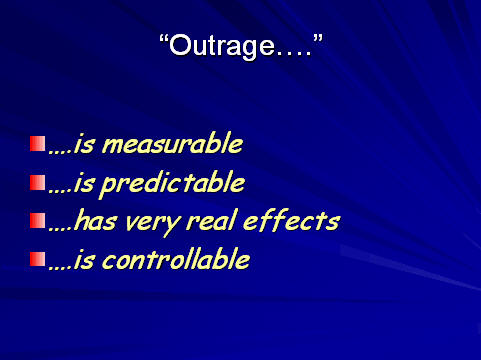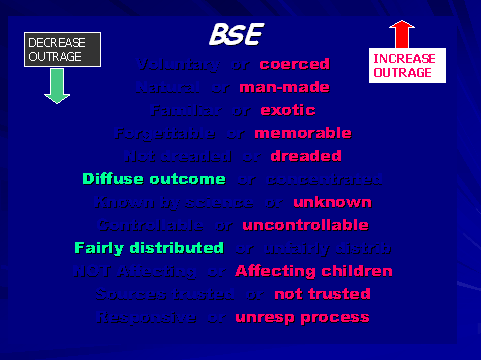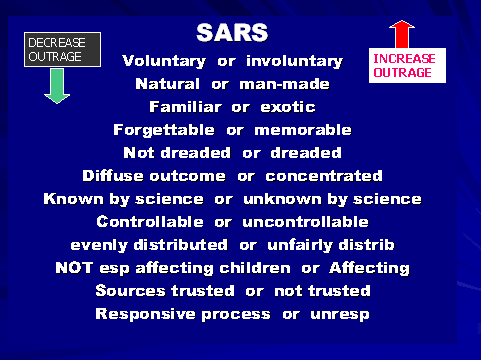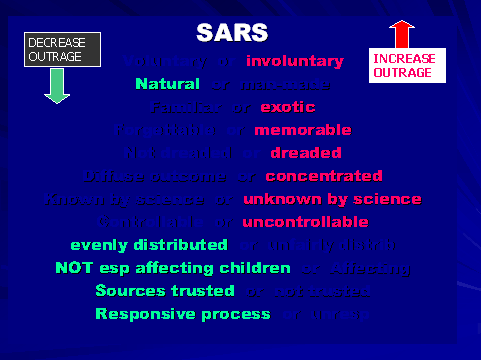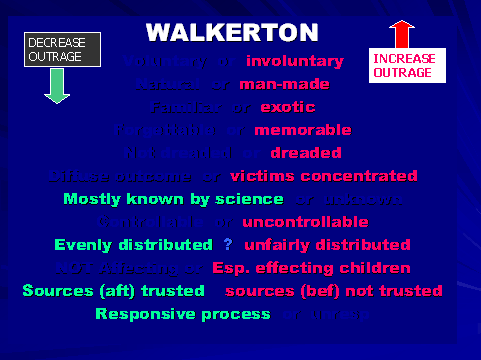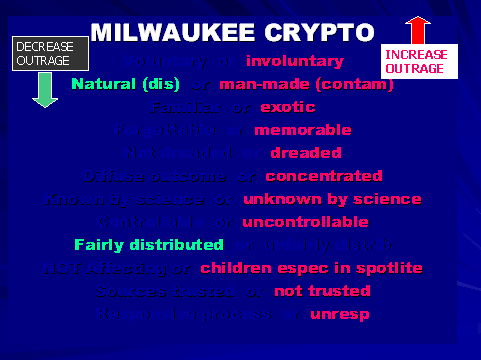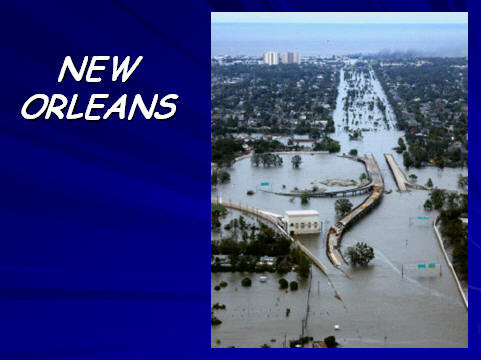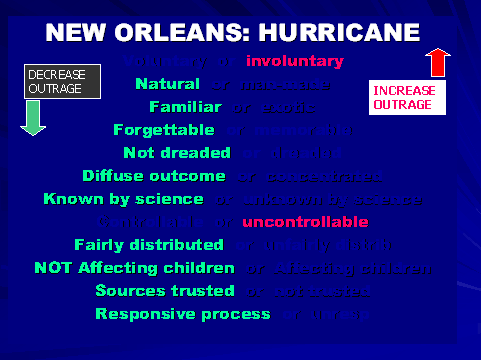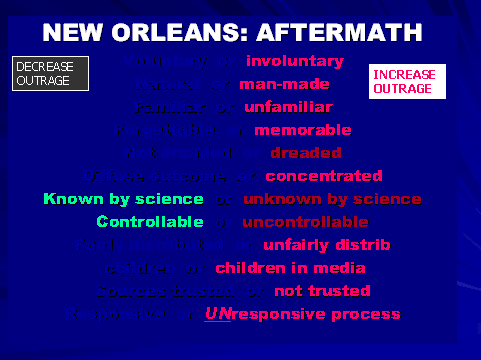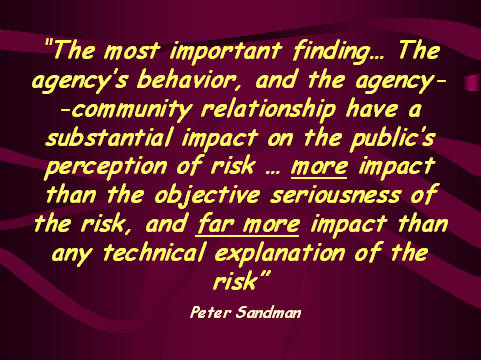ASSESSMENT AND COMMUNICATION OF RISK
Outrage factors - proposed by Sandman, Chess, Hance. |
These are some of the "outrage factors" proposed by Peter Sandman's team at Rutgers. On the left of each couplet is the factor in the form which could be expected to increase community "outrage" anger and resistance. On the right is the same issue in a form expected to be more acceptable and likely to reduce outrage and anger for those affected. 1. Imposed or Voluntary? 2. Industrial or Natural? 3. Exotic or Familiar? 4. Memorable or forgettable? 5. Dreaded or non-dreaded? 6. Catastrophic or diffuse? 7. Unknown or familiar to science? 8. Not controllable by individual or Controllable by Individual? 9. Unfair or fair? 10. Ethically Unacceptable or Ethically Acceptable? 11. Source not trusted or Trusted? 12. Unresponsive process or Responsive? 13. Affecting children/unborn or not affecting them? |
The factors are shown below with examples and notes..
1. Imposed Starr (1968) found that people would tolerate 1000 times a given risk if it had been voluntarily entered into as opposed to forced upon a person.
2. Industrial A man-made chemical, process, or waste material will generate far more concern and anxiety than a chemical etc. with similar magnitude of risk that is naturally found.
3. Exotic It is difficult to feel threatened by something familiar and commonplace - your basement rec' room (in the case of radon), or the car (in the case of seat belts). But anything strange and unfamiliar can raise the concern just on that fact alone. This can be used to advantage, when a tactic of introducing people to the exotic material, process, or object can quickly make it familiar and less threatening.
4. Memorable Newsmedia and documentaries have brought detailed images into the living rooms and the minds of people far removed from Bhopal, Prince William Sound, and Three Mile Island. Similarly, books, movies and other fiction have created vivid impressions of outbreaks,
5. Dreaded Certain diseases, contaminants, or forces are inherantly "dreaded". Examples would include cancers, radioactive waste, AIDS/HIV, etc.
6. Catastrophic A threat that is confined to a small area and a small target population is expected to generate far more concern than the same "quantity" of risk (i.e. the same expected mortality) spread over a wide area, with diffuse population.
7. Unknown to experts If "experts" appear not to be familiar with the threat (e.g. BSE/vCJD), the public's trust diminishes and the outrage increases. Lois Gibbs has termed this phenomenon "dueling PhDs"
8. Not controllable to the individual Control is - more than ever - an essential component in establishing a partnership with the public. Though very difficult for both government agencies and private corporations to do, relinquishing to the public a proportion of real decision-making power has proven effective in establishing the co-operation with the residents.
9. Unfair The balance between the distribution of risks and the distribution of benefits is often missing from such statements as: "Overall, the benefits far outweigh the risks of this project." In other words, the benefits may be real and widespread, but the burden of risk tends to be borne almost exclusively by a small subgroup of the larger population.
10. Ethically Unacceptable Certain actions or processes are inherantly unacceptable to most people regardless of the calculated risk. These would include deliberate contamination/pollution of ground water used for drinking, medical waste in areas where children play, or a procedure that seems taboo such as cannibalism (as in amplification of BSE with ruminant-to-ruminant feeding).
11. Source not trusted One of the most influential factors. And trust cannot be acquired quickly; there is no shortcut. People are trusted if their long term record supports that approach. For recent arrivals, or for troubleshooters parachuted in, the only substitute is acountability. Hold open meetings, share data, show results, share decisions, and power. Let then see you in action
12. Unresponsive process Unresponsiveness takes many forms... lack of signs of 'caring' about the community, lack of signs that the agency is listening to people's concerns, unwillingness to be open, simple, and understandable, unwillingness to admit errors or to apologise.
13. Affecting children/unborn This is used at least once by all sides in any confrontation about locally-unwanted-land-uses (LULUs). But if there is a specific link with infants and children, the outrage reaches great heights.
NEW........ MORE powerpoint slides are added here
